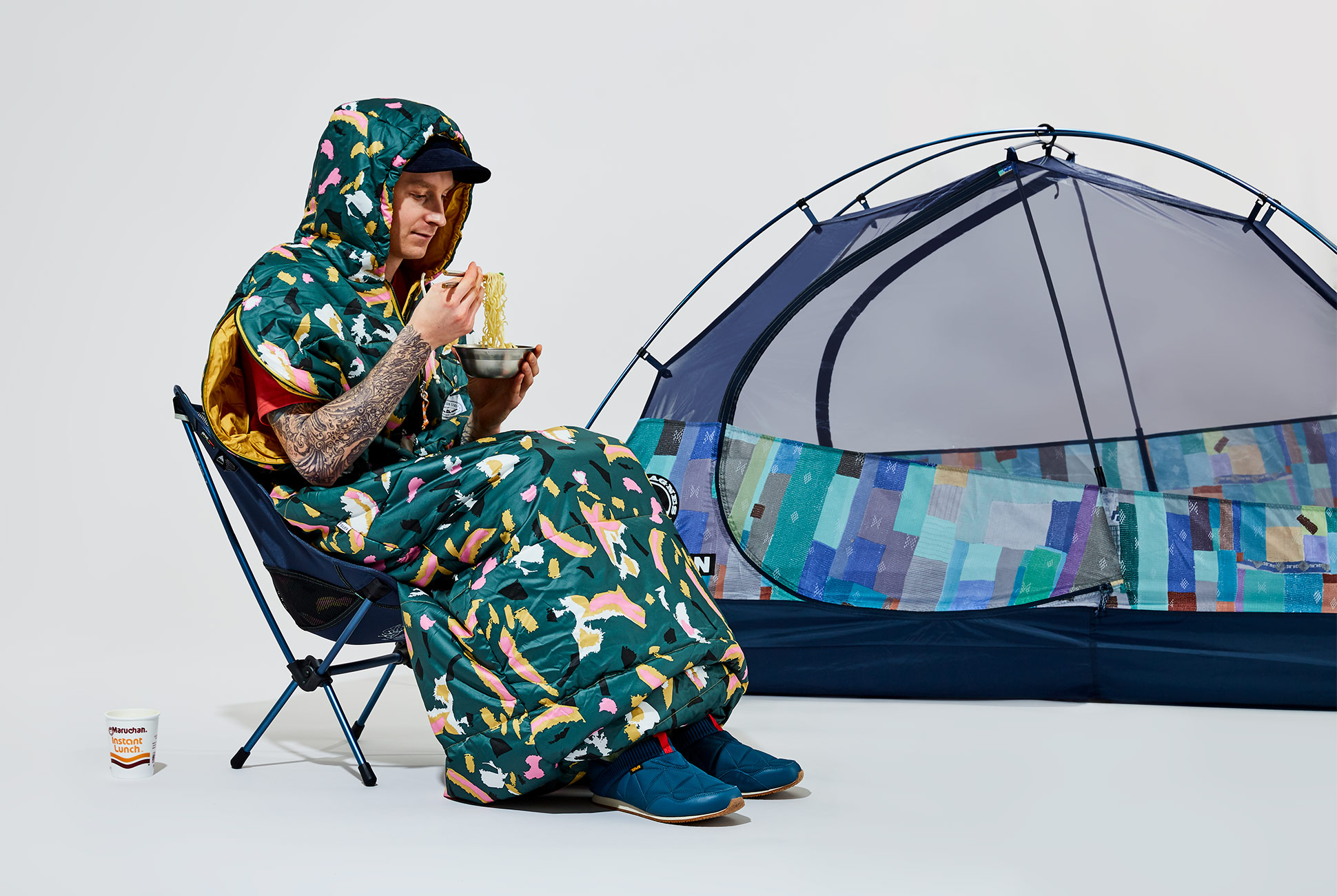From Issue Six of Gear Patrol Magazine.
Discounted domestic shipping + 15% off in the GP store for new subscribers.
T
here’s a photograph, now iconic, of hip-hop icons Notorious B.I.G. and Ma$e that was taken during the mid-90s. With heads tilted slightly to the left, just enough to convey the appropriate amount of apathetic defiance, neither is smiling. Their hands are in their pockets, gold chains and medallions are draped around their necks. Their jackets are splayed wide — large and puffy with oversized baffles filled with down insulation. Notorious B.I.G.’s is bright yellow, its brand unidentifiable, but the abstracted Half Dome logo of The North Face is all too plain on Ma$e’s shoulder. It’s the Nuptse, originally released by The North Face in 1992 as a jacket for mountaineering.
Hip-hop artists may have adopted the puffy jacket as a street-worthy status symbol in the 1980s and 1990s, but the original down jacket was all about cold-weather performance. Eddie Bauer began experimenting with quilted down as an alternative to wool after hypothermia brought him a few visible gasps away from death during a winter fishing trip in Washington’s wilderness. Using down to provide warmth in clothing wasn’t a wholly novel idea, but Bauer’s 1936 Skyliner Jacket was the first of its kind. Ripstop nylon shells and water-repellent down, now ethically sourced in most cases, have helped the down jacket become more technical with age, but that hasn’t kept it off the backs of city dwellers who might never lace up a hiking boot — never mind attempt a summit bid of Rainier.
The down jacket has been adored by hip-hop stars and adopted by the everyman for the same reasons it’s loved by mountaineers: it’s lightweight, wind- and water-resistant, and it’s just about the warmest coat money can buy. Down jackets are pure function. But baffles and bright colors, when removed from the woods and peaks and brought into the city, become something else, too: fashionable. Other items created for camping, climbing and skiing haven’t been so readily appropriated beyond the outdoors, but thanks to a handful of forward-thinking, social-media-savvy brands representing a new generation of adventurers, that’s changing — in an era when function is a given, outdoor gear is free to be stylish, versatile, lighthearted and most importantly, inclusive.
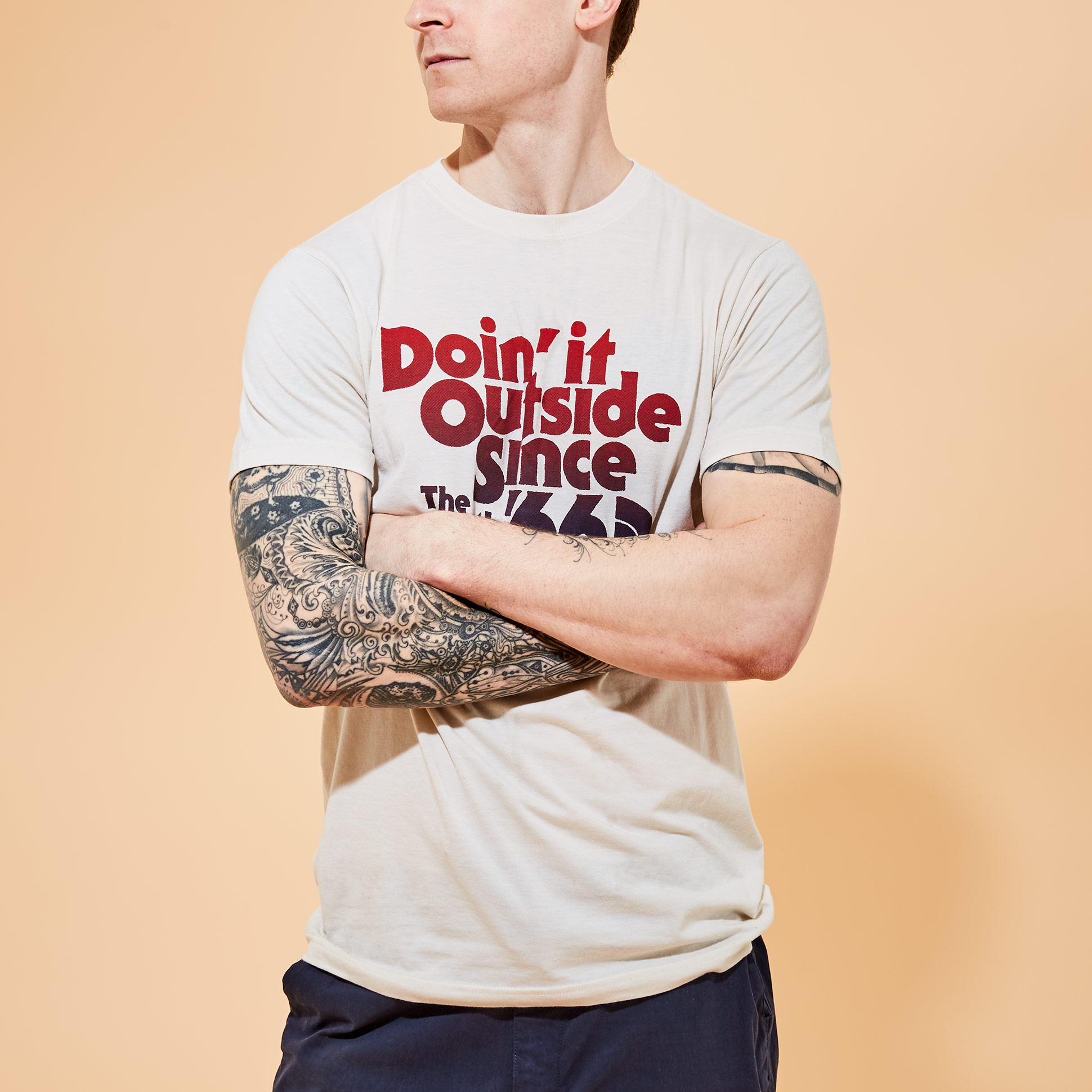
I
ronically, it was the early gear of the 1970s, now vintage, that inspired Jedd Rose to start Topo Designs in 2008. Rose grew up in rural Wyoming (“It doesn’t even make sense to say that I grew up in a small town ’cause the entire population of Wyoming is like half a million people,” he quips.), hunting, fishing and camping with his dad. It was, he admits, the romantic vision of boyhood in the American wilderness, an upbringing just shy of a Hemingway short story.
Wyoming’s landscape, and the items that Rose used to navigate it, had an impact. “I had a bunch of this old gear that was like Frostline and Gregory and Sierra Designs and original REI Co-op stuff — hand-me-downs from my parents — and that really built my aesthetic,” he says. When Rose set aside a career in medical animations and iOS builds to sew a backpack in his basement, it was those items that guided his mind and needle. “A lot of those brands were really hitting on this perfect, simple, classic look and feel, and at the time it was really cutting edge, but taking it out of that context and moving it thirty years into the future, it still held up,” Rose says.
Topo Designs products are retro, but they’re also decidedly contemporary. Its collection of backpacks, Dopp kits and duffels is characterized by geometric profiles — rectangles, triangles and circles — and bright primary colors. Technical elements such as ice-axe loops, webbing attachments and daisy chains are present but kept to a minimum. The point of these bags is not to conquer a mountain, but to integrate into a multitude of life’s facets: the outdoors, travel, lifestyle. “That’s where we always start,” Rose says, “It’s gotta fit a number of different needs.” Like an abstract painter, Rose’s reaction to the romanticized version of outdoor exploration, one characterized by extreme hardship in brutal environments and technically specialized gear, is best demonstrated through simplicity.
Ten years ago, when Rose created Topo Designs, consumers of outdoor gear weren’t as receptive to the vision of form over function, or even form equal to function, as demonstrated in one of Topo Designs’s earliest products, the Klettersack. “It just has this perfect marriage of classic style, classic elements… it works every day, from going to work to taking it out on the trail to travel,” as Rose describes it. Today, it’s a best seller and one of the staple pieces that Topo Designs keeps in its line every season; it’s also one of the first products that helped the company gain its initial following. But that didn’t happen in the US, it happened in Japan.
Japan has long fostered a market in which lifestyle-oriented outdoor products thrive. In fact, many notable US-based brands, including The North Face, Burton and Gregory, as well as lesser-known names like Datum, continue to produce gear that’s only sold in Japan. Topo Designs never had that intention, but its simple and utilitarian designs attracted the attention of a distributor there who, working with Rose, began selling its products. It wasn’t until later that Topo Designs began to catch on in the United States, first at boutiques in coastal cities like New York and L.A., and then in the mountain towns of the Rockies and other ranges. “We’re not the typical ‘start in your basement, sell it to your friends, sell it in your hometown, sell it to the town next door’ type of business — we started way far away and ended up working our way back,” says Rose.
“What happened, and what still happens all the time in Japan,” Rose continues, “is they really value the craft, simplicity and story behind a product. And simplicity can be paramount over complexity. Which is kind of difficult for us in the US to understand. That something that is stripped down can be more valuable than something that has every single bell and whistle on it.” It’s a view that places import on something other than technical prowess: story.
B
enji Wagner is a storyteller. Before founding the outdoor company Poler in 2011, Wagner inhabited the action-sports realm of the industry, making films and shooting photos. Like Rose, it was his father that got him out into the woods and mountains at an early age. As the millennium’s first decade ended, Wagner began to feel that the outdoor industry was lacking something. “I didn’t feel that inspired by any of the brands in the way that I thought was possible,” he says. “It was just way too much focus on technical innovation and sheer engineering brilliance and product innovation rather than storytelling. The reason people are in the industry, and the reason all this gear is being made, is that they’re actually passionate about what they’re doing on the weekend, not because they’re passionate about a particular jacket.”
One of Poler’s first products is the quintessence of what Wagner is referring to. It’s a sleeping bag called the Napsack, which features a hood and a zipper that extends roughly halfway down its front. As stated on Poler’s website, the Napsack “is designed to maximize Camp Vibes and induce a euphoric, funfortable state of mind.” Wagner describes it as the “keystone item” for the brand. Its lower hem is equipped with a drawcord, and its shoulders can be zipped open to allow for the free use of one’s arms. It has pockets, it’s reversible and is available in a variety of prints, from rainbow florals to “shaggy camo.” It’s lighthearted, fun — youthful even. “It’s very rare to have a product that actually captures the spirit of a company,” says Wagner. And he’s right; the Napsack is Poler.
The Napsack is not, however, technical. The sleeping bag wouldn’t be well suited to a hut trip or an expedition, but that’s okay, this was Wagner’s intent. “The Napsack was meant to be something relatable and something like, ‘Hey, that’s fun and silly and still has this kind of spirit of adventure,’” he says. Its ideal uses are camping and couch surfing. “It’s also just kind of goofy and makes you look like a gnome — it’s fun and approachable. Six years ago when we launched, that was a very disruptive idea.”
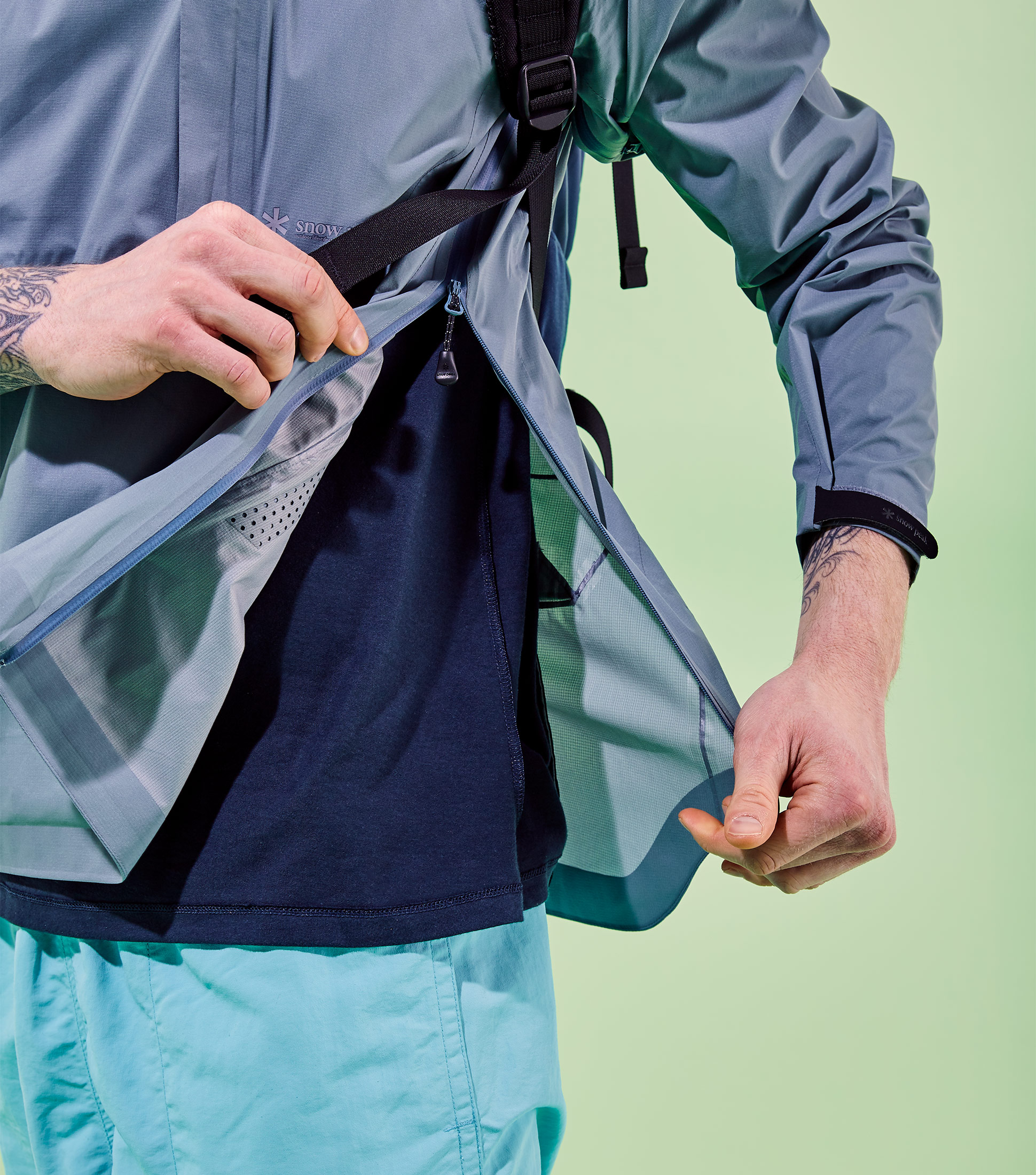
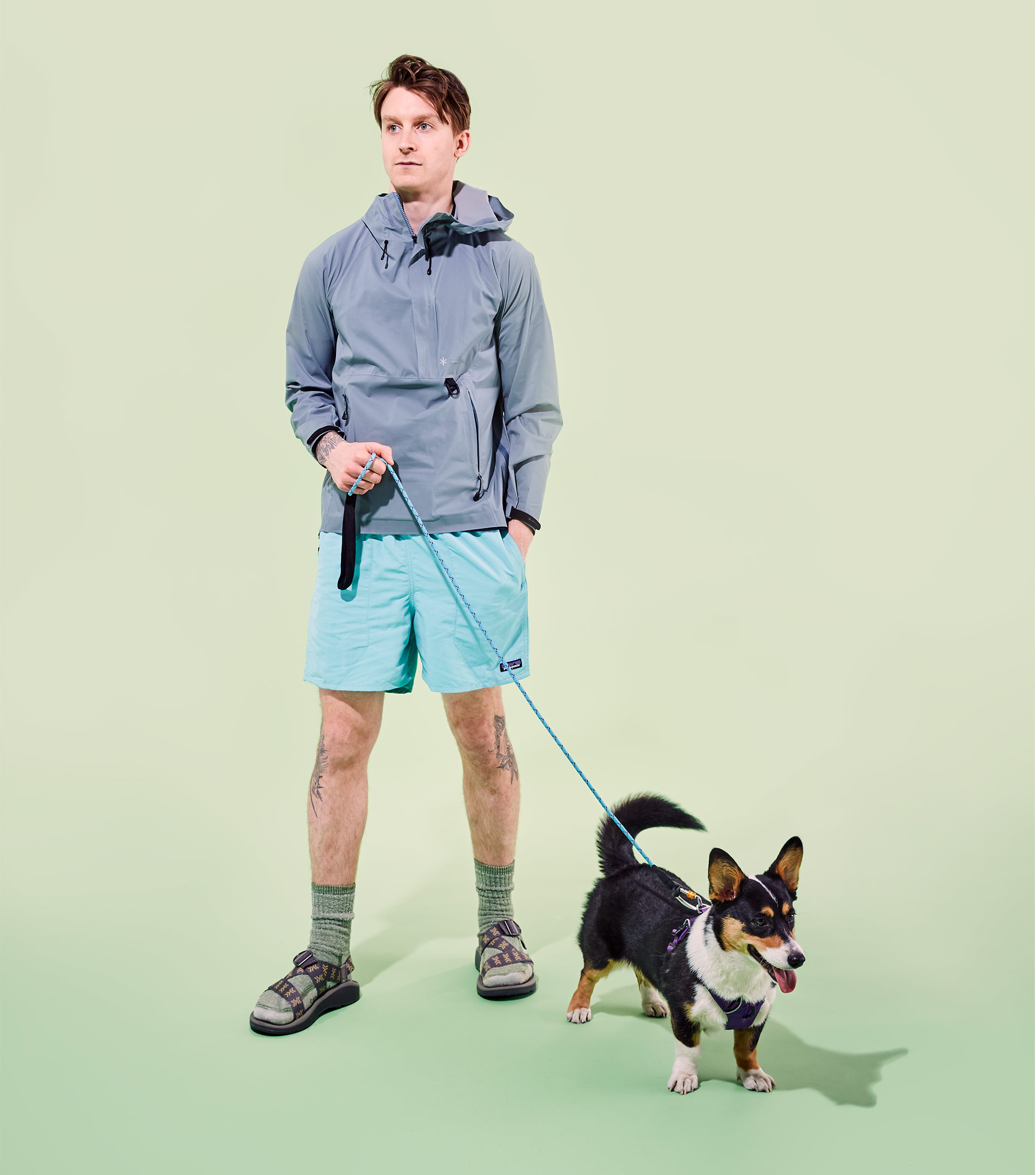
T
opo Designs and Poler addressed a series of issues and tapped into unidentified trends at a time when the outdoor industry was experiencing the growing pains that occur when a younger generation comes into its own. It’s not coincidence that both brands launched and grew parallel with the rise of Tumblr, Facebook and Instagram. Social media not only allowed small brands to grow organically without the need for expensive ad campaigns, it fostered exactly the type of storytelling that Rose and Wagner were craving.
Wagner used social media to launch Poler. Since then, his hashtag, #campvibes, has been used more than 1.5 million times and counting. “It’s kind of our ‘Just Do It,’” he says. Early on, Wagner also established a series of narrative photo essays called “Adventures” — a tact many brands have since replicated — that depict young people on road trips across America, exploring Iceland and camping on the beach in Baja. Napsacks and other Poler gear are the common motif. The images, many of which are shot on film, aren’t heavily composed, which makes each series feel similar to an old family album dug out from under a bed. They’re still romanticized scenes, but they make adventure feel accessible. And it’s just this type of storytelling that’s proven to resonate with the millenials and Generation Xers that are now becoming the biggest group of consumers of outdoor gear.
Older companies have failed to connect with these younger audiences, a result rooted in a lack of approachability. Almost all of them began, and still operate, with mountaineering as their North Star. The North Face was first a specialty mountaineering shop in San Francisco; Yvon Chouinard began what would become Patagonia by forging his own rock- climbing hardware and selling it out of his car; Marmot was an outdoors club that required its initiates to climb a glaciated peak in order to earn admittance. Even as these companies matured and others joined in to make apparel and gear, the message never changed. And as the industry grew, climbers like Ed Viesturs and Conrad Anker became revered athletes plastered on billboards and magazine covers.
That message doesn’t work anymore because most people don’t actually climb high peaks. Or any peaks, for that matter. Rose describes the industry’s traditional beat as focusing on “kind of unattainable aspirational events that you might possibly do in life, but probably not. Like climbing K2 or summiting Everest.” The current cost of a summit bid on the world’s tallest mountain averages around $45,000 — or in other words, just shy of a Chevy Suburban — but can quickly climb above $100,000. Smaller peaks come with less-prohibitive prices, but the heart of the matter is no different: mountaineering is an exclusive and expensive sport.
The new generation of outdoor companies is adjusting. Instead, they focus on van camping, cabin life and global travel. These are pursuits that intersect more closely with conventional life — things that people actually do. “The reality is that most people relate to the outdoors by doing something like going to the beach on the weekend or going on a hike,” says Wagner.
Rose and Wagner, along with the product designers behind other adolescent outdoor brands, reflect their inclusive vision through product. Instead of a $999 Himalayan climbing suit, they create puffy blankets, packable hammocks, campsite barista equipment and heaps of vibrant apparel and bags. They’re retro and new, simple and technical, versatile and capable.
And yet for all of their criticisms of the outdoor industry, neither Rose nor Wagner positions his brand in opposition to it. “Almost all of us here do some pretty serious outdoors stuff. I fish a ton, and we’re definitely not going to make a pair of waders,” says Rose. Wagner shares his attitude; “It’s not like we came out with this anti-technical-gear sentiment. Mountaineering is super-cool and mountaineers need really specific, very strong gear. But going to a music festival is not that.”
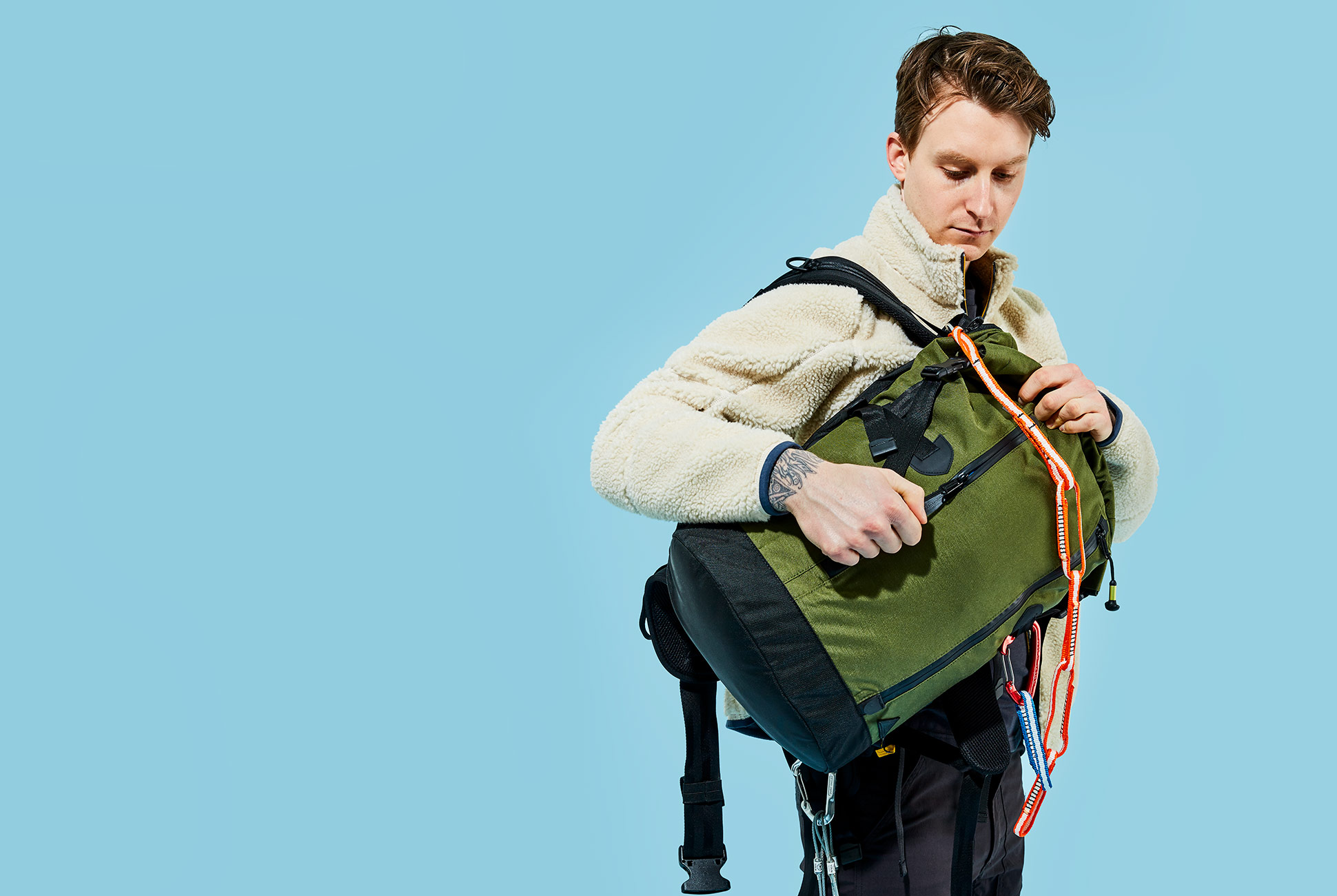
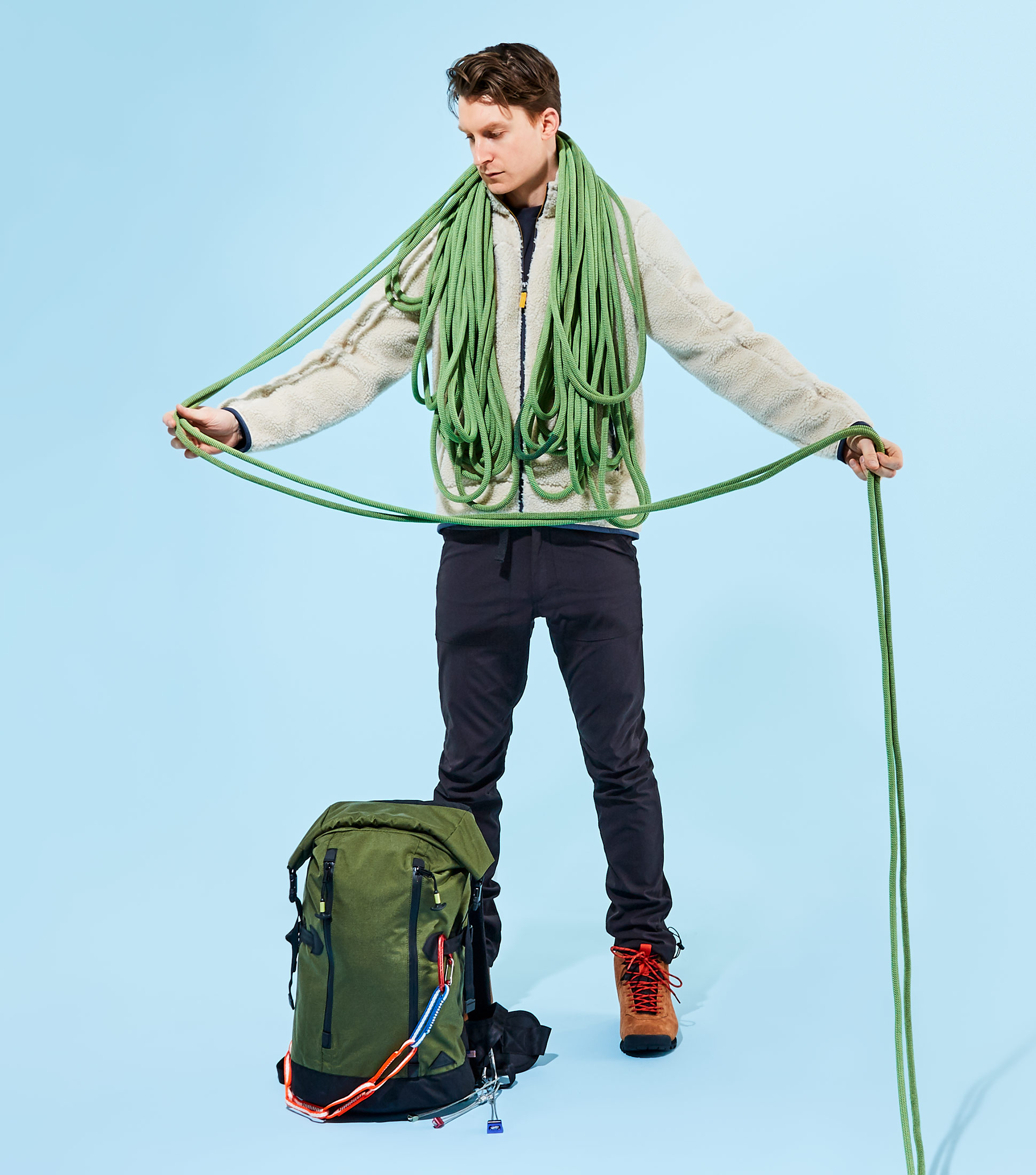
L
ast fall, The North Face released a new jacket called the Ventrix. It was the brand’s first foray into active insulation — an extra-breathable, synthetic alternative to down — and it touts some serious innovation. As part of the launch, the brand created a video, compiling action clips of climbing’s brightest contemporary stars: Jimmy Chin, Alex Honnold and Emily Harrington. But there’s another face in the video that might go unrecognized by hardcore alpinists; it’s Maggie Rogers, a vocalist who went viral after a video surfaced of Pharrell Williams listening to, and being very impressed by, a single of hers titled, “Alaska.” As Chin skis toward a summit and Honnold and Harrington reach for precarious granite handholds, Rogers’s track, “Split Stones,” pulses and thrums in the background.
The North Face isn’t alone among the old guard of brands that are now adapting to a growing population of younger consumers. Salomon, a company with a long history and which regularly works closely with athletes to produce some of the most innovative and technical gear imaginable, recently rolled out a new brand strategy that revolves around its new, lighthearted tagline, “Time to Play.” And Burton, the relative elder of the still-maturing snowboard industry, has widened its offerings to include apparel, backpacks and luggage, as well as product collaborations with Red Wing and Vogue. Another Burton collaboration with Colorado-based Big Agnes produced a full collection of camping products including a sleeping bag, camp chairs and a tent, all printed with funky patterns reminiscent of another, younger outdoor brand — chalk it up to #campvibes.
The North Face’s response has been more calculated. At a superficial level, the company is adhering to its roots in mountaineering; it continues to design highly technical gear for the world’s most extreme conditions and relies on a team of elite outdoor athletes to promote the brand. “It’s the insights that come from athlete testing that influence every decision we make. Which material to use, how long a jacket is, how the hood fits, where pockets are placed,” says Jason Israel, Design Director of The North Face’s Mountain Sports division. But the Maggie Rogers Ventrix video reveals shifting sands, however subtle.
In 2015, The North Face launched a retail concept called Urban Exploration in two of its stores, one in Shanghai and the other in Hong Kong. Inside those stores was an exclusive new line of apparel and gear built for city life and designed using technical outdoor materials. The North Face continued to test the waters of streetwear in Asia for the next two years, and in 2017 the company brought a collection called the Black Series to the United States.
“The inspiration behind the Black Series product line was to take TNF’s strong DNA in performance and extend it into the urban environment,” explains Tim Sedo, Senior Brand Manager of The North Face Urban Exploration. “We developed this line because we believe that ‘outdoor’ as a category is much more than ‘the mountains’ and that we have a unique opportunity to equip people with performance-driven yet stylish products suited for urban outdoor life.” Black Series products won’t be found at REI and they’re not explicitly front-facing on The North Face’s website. But they are there, and that signals something. A slow change, maybe.
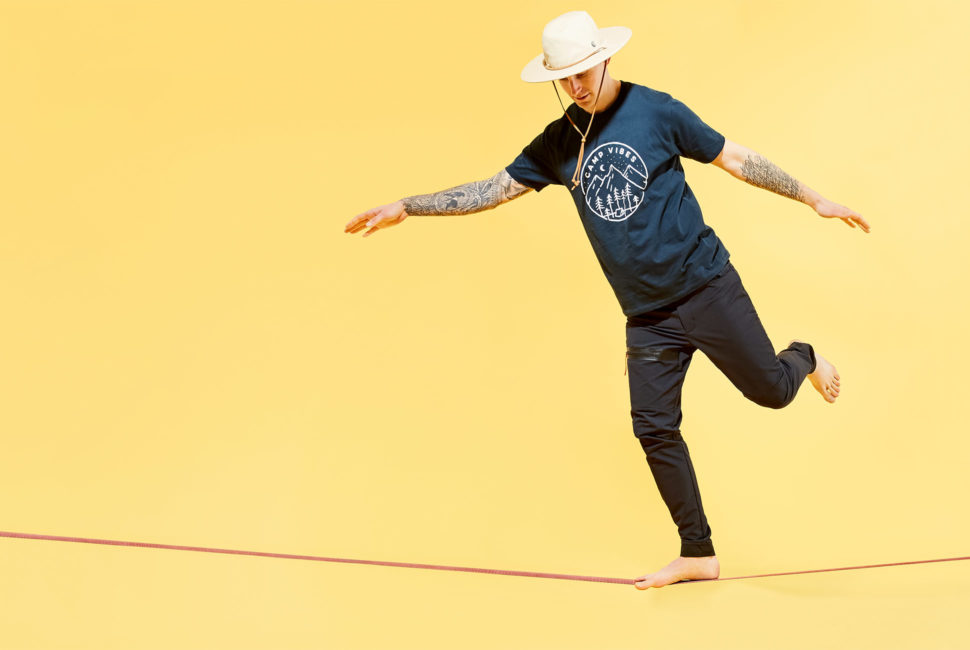
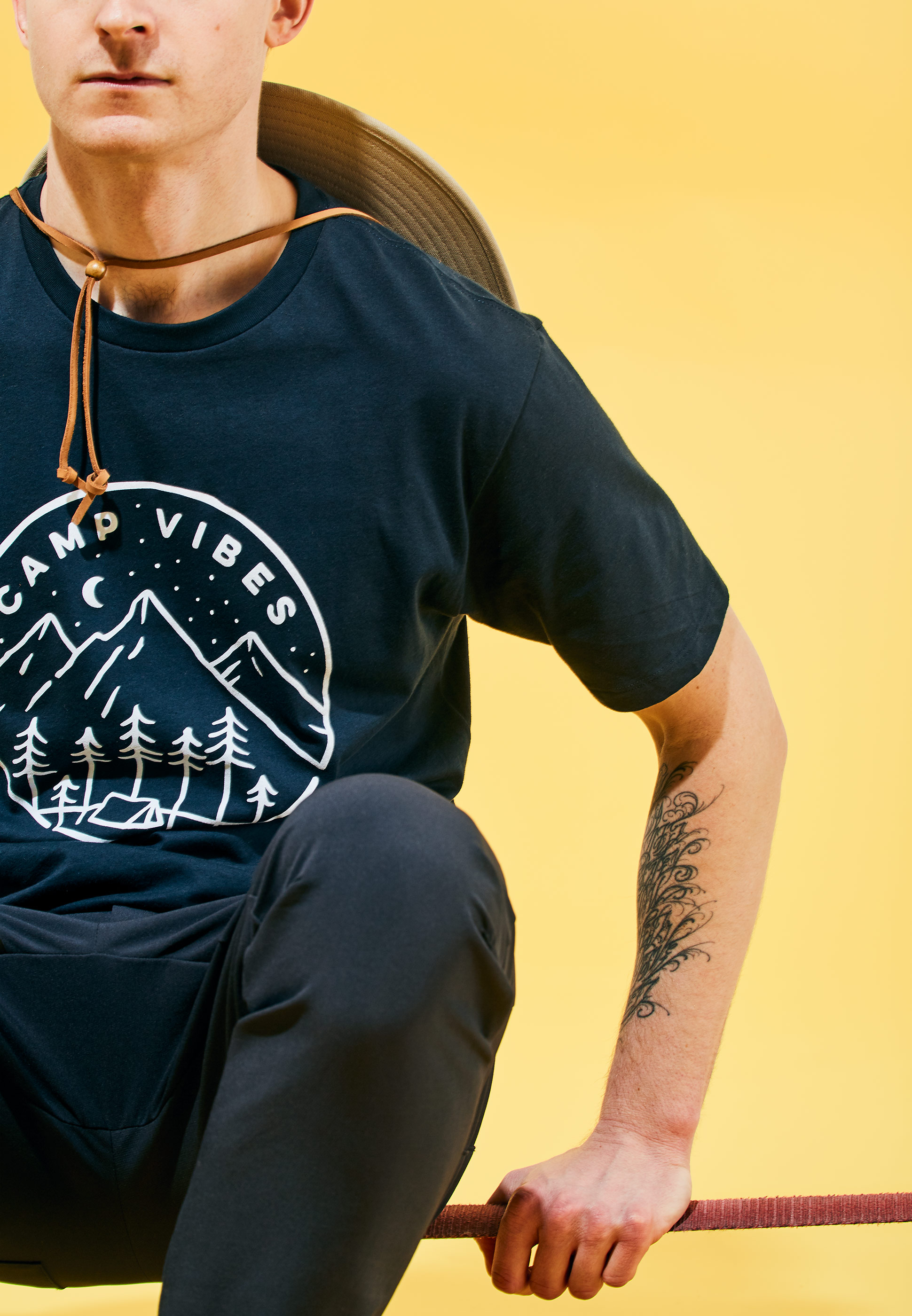
E
arlier this year, style blogs erupted with fanfare when Kanye West was spotted wearing a plain black Nuptse jacket. In response, GQ hailed the Nuptse as “the perfect everyday sort of piece that’s built for sweats and sneakers and your favorite dad cap,” and “a solid-ass jacket.” Outdoor apparel continues to find its way onto the backs of movie stars and supermodels and is currently a staple on fashion runways from New York to Milan. Even Vogue.com’s Culture Editor, Alessandra Codinha, recently dubbed polyester fleece “ugly pretty” and claimed that “[her] heart belongs to the fleece.” Yes, “gorpcore” is “in,” and strappy Teva-like sandals, windbreakers and fleece are now fair game and even verging on standard fare for the likes of Louis Vuitton and Marc Jacobs.
A recent exhibition at New York City’s Museum of Modern Art titled, “Items: Is Fashion Modern?” featured 111 articles of clothing and accessories that have impacted the 20th and 21st centuries deeply enough to be displayed alongside Picasso and Van Gogh. Among the items was a red down jacket, and the plaque that accompanied it told the story of Eddie Bauer’s fateful trip into the mountains.


